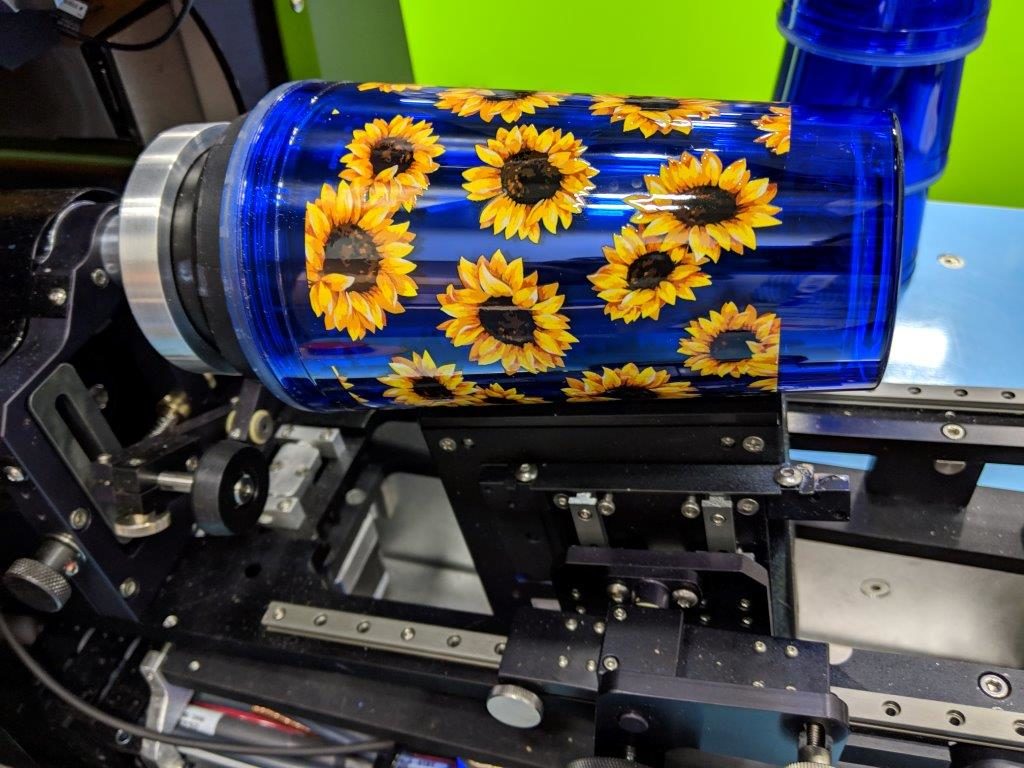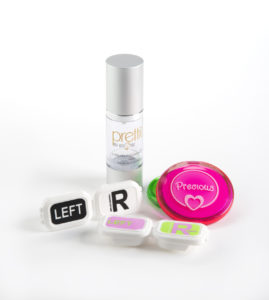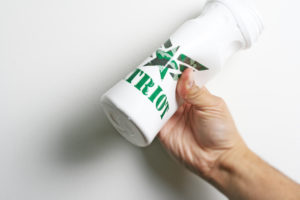Screen Printing On Plastic Cups
How-To July 23, 2020
What do you Need to Print on Plastic?
How-To

As seen across the industry, pad press and inkjet press are among the top processes for printing on plastic. But plastic is more than than meets the middle. Did y'all know that there are 7 listed different types of plastics, but the 7th option is miscellaneous plastics which includes hundreds of alternatives and different mixes? Since many plastics are sourced from outside vendors, understanding exactly which plastic y'all are working with may pose a claiming simply in that location are always solutions to these printing roadblocks.
Before nosotros talk over the different processes for press on plastic, information technology is important to note that although many companies may have their become-to combinations for plastic decorating, well-nigh will want to practise adhesion testing anyway. We see this with silicone as well; where manufacturers mix one batch for 1 product one way and then mix a batch for the aforementioned product some other way. This makes information technology difficult for ink adhesion because you have the same product, but it is comprised of different materials. This is why, to exist safe, we always test plastic or silicone products coming in before nosotros suggest a pre-treatment/ink combination.
Pad Press on Plastic

For those who are unfamiliar with pad printing, pad printing is the procedure of mixing a solvent-based pad printing ink with solvent, hardener, and other additives. This pad printing ink is specifically chosen for the substrate yous are printing on. Inkcups carries 7 different pad printing inks for printing on plastics. The ink is added to an ink loving cup and placed on the pad press auto. The pad printing machine essentially acts equally a postage, picking upward the artwork from an etched plate or cliche with a printing pad and placing it onto the product. This procedure is very pop with companies who are looking to print one- to 6-color graphics. This is especially pop with plastic molding companies.
Acquire more than about the basics of pad printing: Pad Printing the Inkcups Way
When it comes to pad press on plastic, bated from ink, at that place are a few things to consider:
-
Pre-Treatment
- Most solvent-sensitive products volition non demand pre-treatment. That is because the solvent in the ink will modify the surface tension of the production, making it accepting of the pad press ink to adhere to it. Those products that are not solvent sensitive (PP, Nylon, HDPE and other very hard plastics), will need to be pre-treated. In some cases, a chemical pre-treatment is plenty. A chemical pre-handling is typically in the form of some type of wipe of the product to fix its surface. Other types of pre-handling for plastic includes flame and corona. If you are familiar with solvent-sensitive vs. non-solvent sensitive plastics, make sure to relay this information to your supplier.
-
Drying
- While pre-treatment prepares the product for printing, a post-cure solidifies the bond. Whether by heat or air, a pad printed plastic production may need to exist cured. Always speak to your ink practiced about the proper process.
Encounter our line-up of pad printing machines
UV Printing on Plastic

The same considerations apply to UV printing on plastic. UV printing or UV inkjet printing is a direct-to-substrate procedure. The artwork is created and manipulated in a blueprint software (Photoshop or Illustrator) then sent to the printer to impress. Hither, a UV inkjet ink is jetted onto the product in the form of tiny droplets utilizing cyan, magenta, yellow and black ink to course the image that was created on the calculator. Every bit the name implies, the UV inkjet ink is then cured using the UV/LED light that is standard with all machines. Keep in mind that this is not a separate process, this all takes place in one machine.
When information technology comes to UV printing on plastic, you will also need:
-
Pre-Handling
- With UV printing, an inkjet primer is needed for most plastics. Going farther with pre-treatment volition depend on your intended utilize. With drinkware, if the production is a high-quality gift which will exist done oftentimes, you may want to pair your primer wipe with an boosted pre-treatment step such as flame, corona or plasma treatment. If the product is a simple promotional product, a primer wipe will satisfy the needs of that use. This game changes for flat items. Since most inkjet printed flat items will not go into the dishwasher, a primer wipe may just be needed. There are some plastics that may not need pre-treatment at all due to a specialty UV ink used. For case, our T2 UV ink for Tritan Plastic is a specialized ink for Tritan plastic. This ink was formulated specifically to attach to this pop plastic without pre-treatment.
-
Post Curing
- Every bit mentioned above, the final cure takes place within the machine so an additional automobile for curing is not needed.
See our line-up of UV printers
All in all, the decision to choose 1 method over the other depends on what your desired outcome is. Both processes may need to apply a pre-handling method to prep the surface to accept ink. While UV inkjet printing incorporates the mail-curing, pad press may require drying (either air or heat). If either choice will work for you, information technology is important to first send your product to the machine supplier to test to see which method is viable. Sometimes, since plastic can vary so much, one method may not piece of work besides as the other.
Inkcups has shut to 20 years working with different plastics. Our application specialists have skilful noesis in the right combination of inks and pre-treatment merely e'er test to exist certain.
Contact us to get started printing on plastic
Dorsum to Web log Home
Screen Printing On Plastic Cups,
Source: https://www.inkcups.com/blog/what-do-you-need-to-print-on-plastic/
Posted by: mabreyofforn.blogspot.com


0 Response to "Screen Printing On Plastic Cups"
Post a Comment